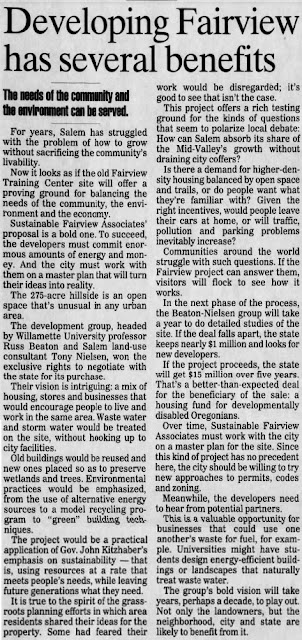The bill for a study on a Salem streetcar, HB 3224, has enjoyed a strange enthusiasm.
Tonight the Cherriots Board will get a review of the Legislative Session from their Lobbyist.
 |
| HB 3224 was stuffed into a "Christmas Tree" bill! |
I had thought the bill for a Streetcar Study had died, and it had, but the provisions of the bill were stuffed into one of those end-of-session omnibus "Christmas Tree" bills.
So now we'll want to watch the study with great scrutiny, to see if it is a sober and level-headed analysis, or if it is lofted with hot air and enthusiasm.
 |
| Study of Portland Streetcar |
A Federal study of the Portland Streetcar had said its "aggregate unit cost" was $45 million per mile in 2016. Given the current environment of cost escalation, that could easily double to $100 million per mile today.
The annual budget for Cherriots appears to be about $50 million.
People are currently upset over the McGilchrist project at a little over $50 million.
 |
| Budget from May 25th meeting |
So it is very strange to consider the circumstances under which a streetcar would represent a good value.
Even at $45 million, a mile of streetcar could get you a lot of new buses and a lot of frequent service!
Additionally there is a threat a streetcar poses to cannibalize the Union Street Bridge and the dangers it poses to ordinary bicycling travel when wheels get caught on the rails. There are ways a new streetcar could degrade walking and biking.
A good study will be clear-headed about trade-offs and costs and not merely try to whip up enthusiasm.
Previously and elsewhere see:
- "As a new Streetcar Proposal is Floated, Close Scrutiny is Needed" (2022)
- "City Club Talks Streetcar - But are we Missing Simpler Solutions?" (2013)
- At Strong Towns, a mixed assessment in posts tagged "Streetcars."
- At occasional Cherriots consultant Jarrett Walker's Human Transit, also a mixed assessment in posts tagged "Streetcars."
Update, July 30th
Here it is in the paper. It's nice to see leaning into the history a little.
 |
| In today's paper |



































